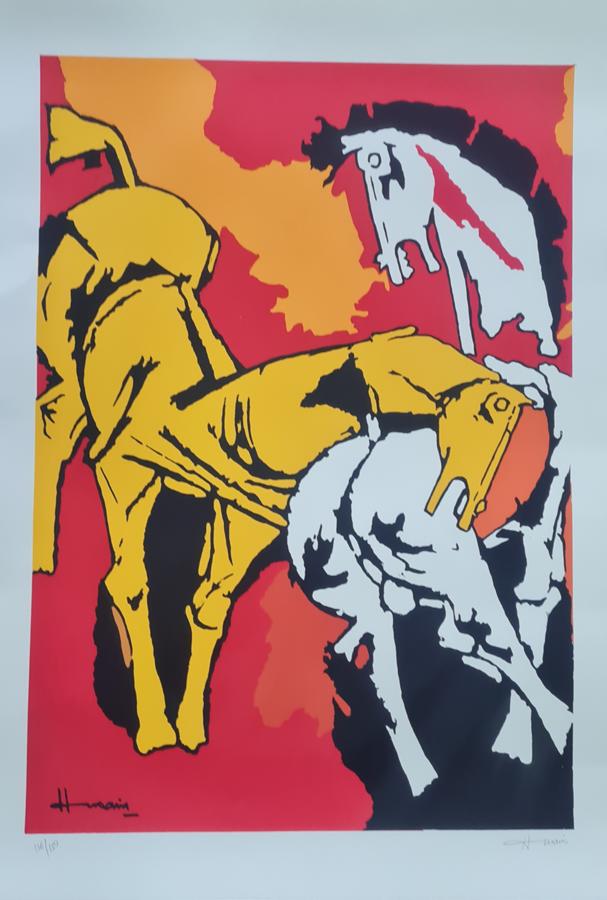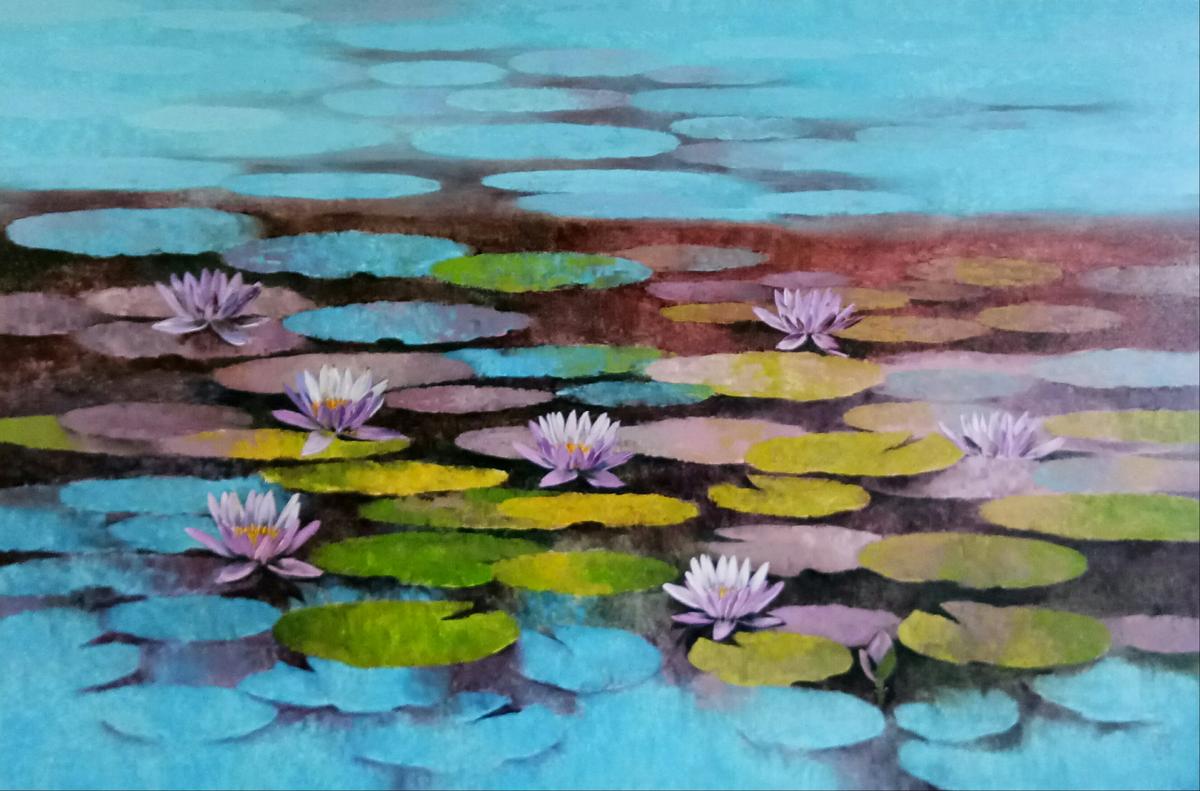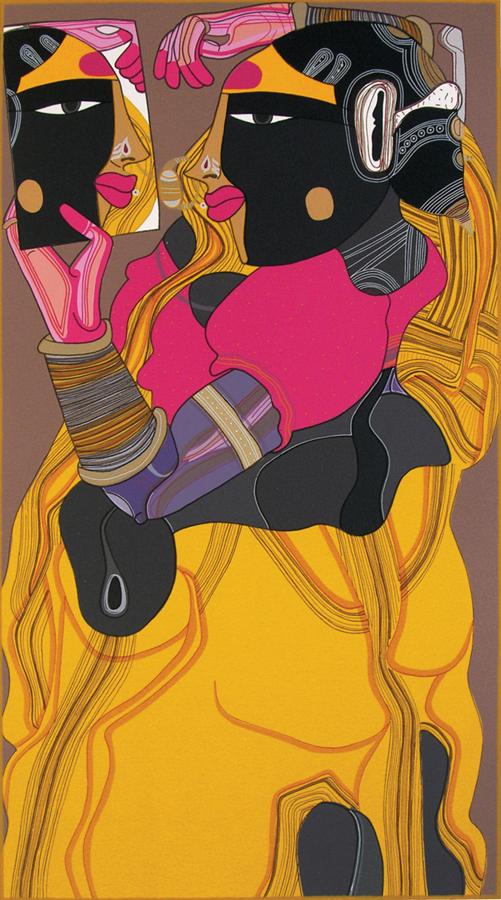- Team Mojarto
Popular Artists like M F Husain, Raza, Souza and Vaikuntam rule the hearts of many with their artworks.

M F Husain is often described as a prolific and rebellious artist who is known to break conventions. His bold and vibrantly coloured paintings have a narrative to make. The charismatic artist redefined the Indian art scene to a large extent. The “Picasso of India” depicts Indian subject matter in cubism style. The blend of cubism with an Indian touch makes him the maestro of contemporary Indian art. His themes include very Indian topics like Gandhi, Mother Teresa, episodes from the Ramayana and Mahabharata and the rural life of the country. Interweaving religious and symbolic iconography with historic figures and events, the paintings also incorporate memories from the artist’s own life.
Husain’s horses need no introduction. Horses are one of the most popular images in his works. The image stands for grace and freedom, where the artist’s desire to be free is reflected in his artworks.

Pune based artist Swati Kale’s strong love for flowers is evident in her artworks. Flowers are a consistent and repetitive motif in her works. The artist views flowers as a symbol of the energy of the universe. Her artworks radiate a sublime sense of purity and innocence. She uses flowers and gardens to portray her garden of memories, thoughts and dreams.
Swati Kale’s images are radiant, fresh and impressive. Her flowers express a kaleidoscope of emotions. Some seem to smile, some have a sad expression while others are plain, honest and upright. This is enhanced with refreshing colours and invigorating shapes.

Artist Somnath Bothe’s journey in the art field began with landscapes and portraits. A deep-rooted respect for ‘nature’ and ‘humility’ is the inspiration for his paintings. His urban life and love for rural life created new sensitivities and understandings in his artworks. His paintings are colourful, vibrant, nostalgic at times, and sheer conversational pieces. Subdued and quiet by nature paintings is his language.
Somnath has his own way of showing his creations. His colour schemes are modern and flashy but this is intentional, to remind us of the importance of historical places. The fusion of the rainy season and historical places in cities and villages constitute the subjects of his paintings. Now painting is not just a technique, it has become a medium of expression for him. Somnath Bothe’s creations represent a beautiful blend of varied geographies and cultures. The passion for cherishing humanity, love and affection, the fusion of village and city life are the subjects of his works and folk human figures find a central place in most of his artworks.

Here is a modern artist who loves experimenting with different styles from around the world. Eventually, Abstract Expressionism and later, Geometric Abstraction became his forte. ‘Bindu’ is a constant motif in his artworks. It is Raza that you are reading about here. His engagement with nature and the landscape and his mastery of colour, which he deployed in rich combinations.
Over time, his landscapes have become increasingly abstract. Raza fuses abstract and symbolic forms into a powerful expression of the mood and atmosphere of the Indian nightscape. His paintings resonate with the intense colours of India with all their symbolic and emotive values. Many of his paintings have a dark circular focal point termed the Bindu which according to him is the fountainhead of both energy and creativity. In Sanskrit, the word ‘Bindu’ literally means point or dot. It has the related connotation in Indian philosophy of being the point of all creation; the source of space, time and consciousness. He rendered other aspects of Indian cosmology with geometric shapes: the complementary forces of male (Purusha) and female (Prakriti ) energy, for instance, represented by upright and inverted triangles.

Thota Vaikuntam hails from Telangana and finds his inspiration in the rural areas of the state. Men and women of his village are often the central characters of his work. His muses are the sensuous and voluptuous women of his hometown, with their distinct red bindis and colourful saris that highlight their dusky skin. He attempts to capture their vibrancy.
To capture the simple lifestyle of the villagers, Thota Vaikuntam uses similarly simple colours in his paintings. He generally uses only primary colours, as he believes that composite colours do not exist in nature and therefore are unnatural. He believes that it gives a sense of character and depth to his paintings. His stylized portraits focus on their subjects’ garments and accessories. Vaikuntum’s works in bright primary colours and invigorate fluid forms come together to form distorted perspectives of the images. Vaikuntam often sets his figures against monochrome backgrounds to highlight their ornate clothing and adornments.